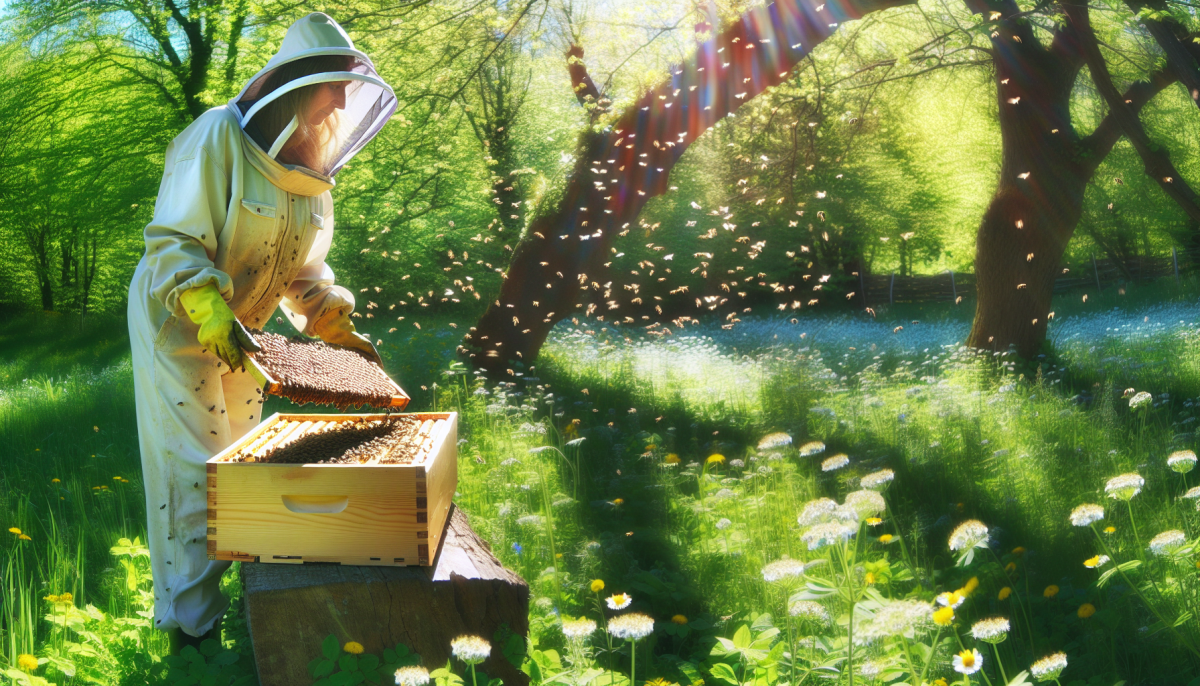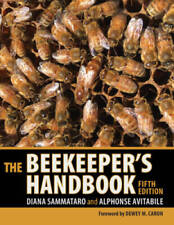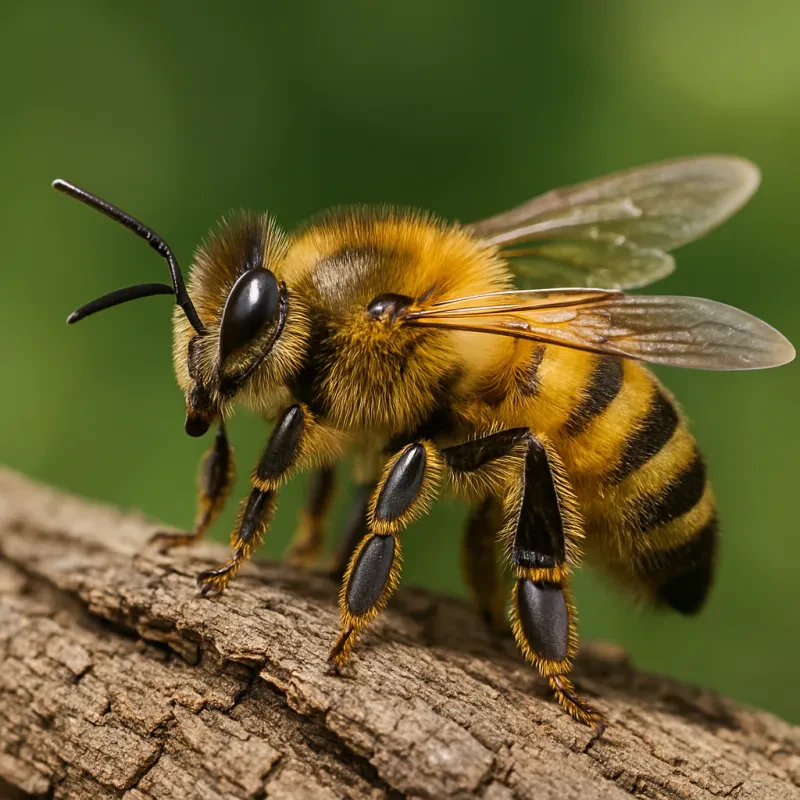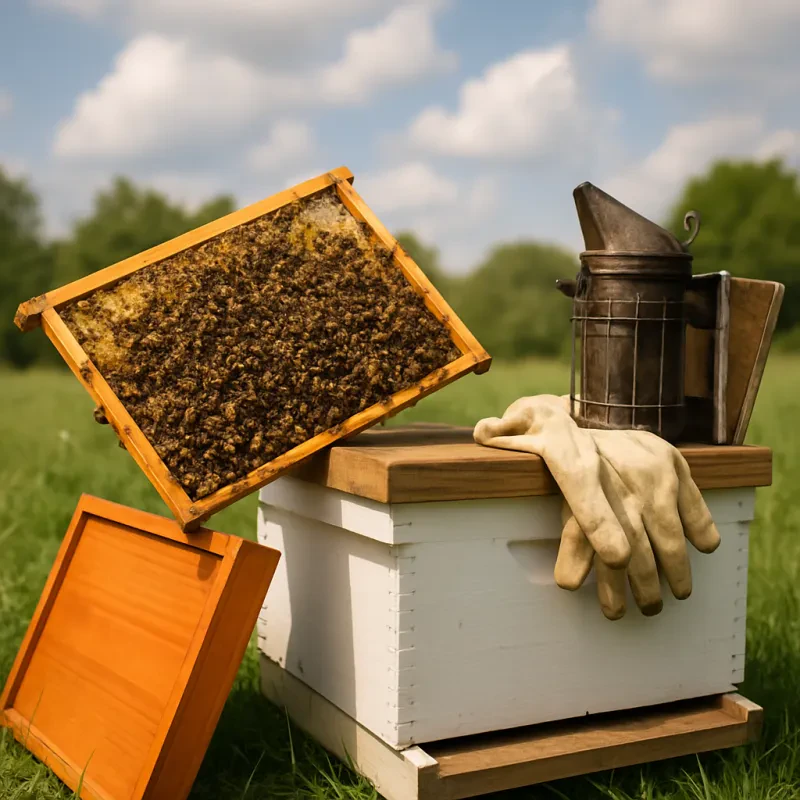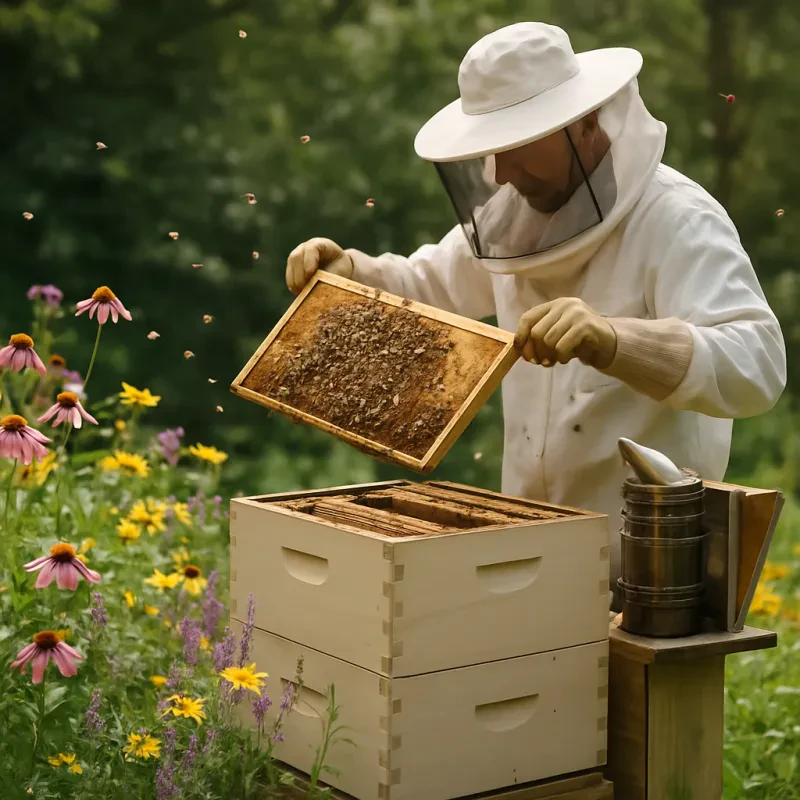$52.99
4.7 out of 5 starsComplete Beekeeping Starter Kit with 22 Essential Tools
The ultimate kit for aspiring beekeepers, equipped with 22 essential tools for a successful venture into the world of beekeeping
Product information
Product Review Score
Product links
Catching a honey bee swarm is a fascinating and rewarding challenge for beekeepers, offering an opportunity to expand their apiaries and contribute to the conservation of these essential pollinators. A swarm, which occurs primarily in spring and early summer, is a natural part of the honey bee life cycle, where a queen bee leaves the colony with a large group of worker bees to form a new hive. Successfully catching a swarm requires preparation, patience, and a respect for the bees' well-being. Here is a comprehensive guide with tips for effectively catching a honey bee swarm.
1. Preparation and Safety
Equip Yourself Properly: Safety and preparation are paramount. Ensure you have a bee suit, gloves, and a veil to protect yourself from stings. While swarming bees are generally docile, they can become defensive if they feel threatened. Having a smoker can also help to calm the bees during the capture process.
2. Identify a Swarm
Learn to Recognize Swarms: A swarm of bees is typically found in a large cluster, often hanging from tree branches, fences, or other structures. Swarms can be identified by their temporary resting state as they scout for a new home. Understanding the difference between a swarm and bees simply foraging or returning to their hive is crucial.
3. Have the Right Tools
Gather Necessary Equipment: In addition to personal protective gear, you'll need a few key items to catch a swarm:
- A bee brush or feather to gently guide the bees.
- A ladder for reaching swarms located high up.
- A hive box or a temporary container with ventilation to house the swarm once caught.
4. Timing is Crucial
Act Quickly but Calmly: Swarms can move on quickly if they find a suitable home. Once you've identified a swarm, approach it calmly and swiftly to maximize your chances of success. Early morning or late afternoon, when temperatures are cooler, are the best times to catch a swarm, as bees are less likely to fly.
5. Capture the Swarm
Secure the Queen: The most critical aspect of catching a swarm is ensuring the queen is safely captured, as the rest of the bees will follow. You can gently shake the branch or surface where the swarm is clustered into your hive box or container. If the queen enters the box, the remaining bees will usually follow.
6. Transfer to a Hive
Prepare a New Home: Before transferring the swarm to their new home, ensure the hive is ready and appealing. It should be clean, with frames for the bees to start building comb. Placing a frame of drawn comb can also encourage the swarm to accept the new hive as their home.
7. Feed the Swarm
Provide Nutrition: Swarming bees leave their previous hive with limited resources. Providing a sugar syrup feed can help sustain the swarm as they establish their new colony. This will also encourage them to stay in the new hive and start building comb immediately.
8. Monitor and Care
Keep an Eye on the New Colony: After successfully catching and housing a swarm, monitor them closely for the first few weeks. Check if they are building comb and the queen is laying eggs. It may also be necessary to treat for pests and diseases to ensure the health of the colony.
Additional Tips
- Use a Swarm Lure: Applying a pheromone lure or lemongrass oil in your swarm trap or hive box can increase the chances of attracting a swarm.
- Be Patient: Sometimes, even with the queen inside the box, it can take time for all the bees to enter. Allow the bees time to settle.
- Join Local Beekeeping Communities: Engaging with local beekeeping groups can provide valuable insights, support, and notifications about swarms in need of capture.
Catching a honey bee swarm is an exhilarating experience that requires preparation, knowledge, and a gentle approach. By following these tips, you can safely and effectively catch a swarm, helping to secure the future of these vital pollinators. Remember, the safety of the beekeeper and the well-being of the bees should always be the top priorities. With patience and respect for these incredible insects, you can grow your apiary and contribute to the sustainability of beekeeping and the environment.
$22.83
4.52 out of 5 starsBeekeeping Handbook - Expert Guide for Beekeepers
The ultimate resource to master the art of beekeeping and excel as a beekeeper
Product information
Product Review Score
Product links
